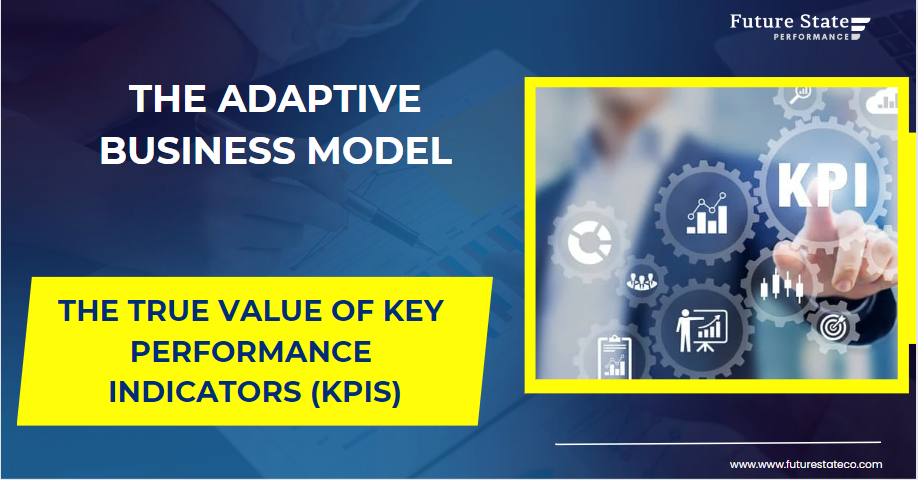Summary
- Strategic Alignment: Start by aligning KPIs with organisational objectives and output requirements to ensure relevance and impact.
- Quality Over Quantity: Emphasise the value of “less is more” when it comes to metrics, focusing on meaningful KPIs that drive actionable insights. The danger is always to have too many KPIs that turn into a case of EPIs that is every performance indicator, where the key ones that drive behaviours get lost.
- Iterative Process: Recognise that finding the right KPIs is an iterative journey, requiring continuous evaluation, feedback, and adjustments.
- Cross-Functional Perspective: Incorporate cross-functional metrics to gain a holistic view of performance and foster collaboration across departments.
- Systems Thinking: Adopt a systems thinking approach to identify key performance “sweets pots” and prioritise actions that drive optimal results.
- Data-Driven Decisions: Transform data into actionable insights to fuel continuous development, improvement, and informed decision-making.
- Culture of Improvement: Cultivate a culture of continuous development and improvement driven by KPIs, celebrating successes and learning from challenges.
By leveraging KPIs effectively, organisations can navigate complexities, drive performance excellence, and achieve sustainable growth in today’s competitive landscape
Introduction
The role of Key Performance Indicators (KPIs) cannot be overstated. They serve as compass points guiding organisations towards their strategic goals and operational excellence. And while there are great applications for KPIs across business, where the true benefit to organisations can be, is taking a more strategic and systems thinking approach.
Here are some crucial considerations when developing and applying KPIs to grow your business
- Assessing Output Requirements:
Begin by viewing the organisational structure and assessing output requirements. Identify key areas that directly impact business objectives and align KPIs accordingly.
- Value of Less is More:
Emphasize quality over quantity when it comes to metrics. Focus on a few meaningful KPIs that provide actionable insights rather than drowning in a sea of data. The ones that truly drive performance.
Distinguish between KPIs and EPIs, that is Every PI, when you measure everything, and where the crucial metrics than can drive improvements having strong impacts, get lost. KPIs should be aligned with organisational goals and have a direct impact on decision-making.
- The Journey to Finding KPIs:
Recognise that the process of finding the right KPIs, is firstly a journey, after that, it’s iterative. It involves continuous evaluation, feedback, and adjustments based on changing business dynamics and priorities. The goal over time is to land with KPIs that are truly bespoke to your business needs.
- Systems Thinking Approach:
Adopt a systems thinking approach to identify the “sweetspots” where various metrics converge to indicate optimal performance. This holistic view helps in prioritising actions that yield maximum impact.
- Cross-Functional Metrics:
KPIs should not be limited to functional silos but should also encompass cross-functional areas. Collaboration across departments ensures a holistic view of performance and drives collective success supporting the seamless movement of information and materials across different departments.
- Data to Insights to Actions:
Transforming data into actionable insights is crucial. KPIs should lead to informed decision-making and drive actions that contribute to continuous development and improvement. A question worth asking for all your current metrics ‘How is this metric adding value to the business?’
There are options when it comes to current metrics
Keep as is
Tweak slightly to have more impact
Discard AND / OR replace with a metric offering more value
- Continuous Development and Improvement:
Embrace a culture of continuous development and improvement driven by KPIs. That includes continuous iteration of KPIs. Regularly review performance, celebrate successes, learn from challenges, and iterate KPIs to stay agile and competitive.
In conclusion,
The journey of setting up, using, and iterating KPIs is iterative and requires a deep understanding of organisational goals, data analytics, and a culture of collaboration and innovation. By leveraging the power of KPIs effectively, organisations can navigate challenges, seize opportunities, and stay ahead in today’s dynamic and competitive business environment.
Key Performance Indicators (KPIs) are not just metrics; they are strategic tools that drive organisational success. By aligning KPIs with strategic objectives, adopting a quality-over-quantity mindset, and embracing a cross-functional and systems thinking approach, businesses can unlock valuable insights, drive informed decision-making, and fuel continuous development and improvement.
Ultimately, KPIs serve as guiding stars, illuminating the path towards sustainable growth, operational excellence, and long-term success. Embrace the journey, iterate with purpose, and let KPIs be the catalyst for driving performance excellence and achieving strategic goals.
______________________________
⏩What are your thoughts? 💬 – What KPIs are driving performance in your business?.🌟💼
🔔 Hit the notification icon to get notified on new content
🔁 If this resonates, feel free to repost
______________________________
#futurestateacademy #InterconnectedFrameworks #BusinessStrategy #SystemsThinking #CrossFunctionalExcellence #BusinessSuccess #kpis


